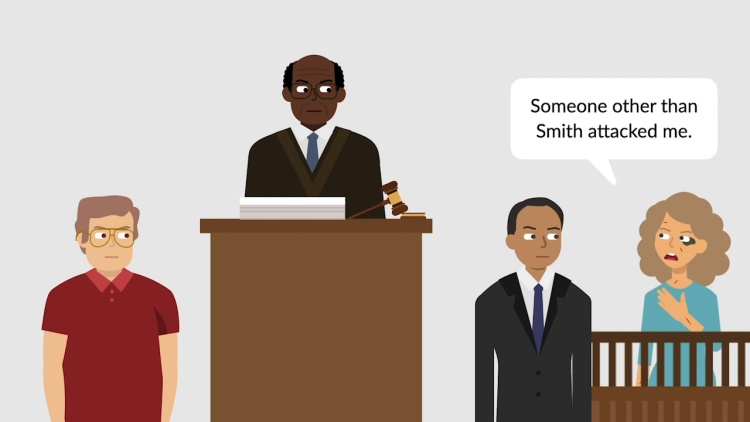State v. Smith
Washington Supreme Court
651 P.2d 207 (1982)

- Written by Christine Raino, JD
Facts
On July 10, 1980 at 6:30 a.m., Rachael Conlin was assaulted in a hotel room. At the hospital she spoke with a police officer, to whom she identified Nova Smith (defendant) as her attacker and said that she was frightened and needed help. The police officer said that she would have to give a statement and testify in court in order for anything to be done about Smith. Conlin later went to the police station and indicated to the detective that she was willing to give a voluntary sworn statement and testify in court. The detective gave Conlin a form containing Miranda warnings on which Conlin recorded the details of the attack and identified Smith as her attacker. The detective then took Conlin before a notary, read the affidavit and oath to her, and then had Conlin reread the affidavit and oath before signing the affidavit. The notary then signed and affixed the seal to the affidavit. That same day Conlin was chased by Smith and Conlin sought help from her apartment manager. The police were called after Smith forcibly took Conlin’s keys and left. At trial, Conlin surprised the prosecuting attorney by testifying that another man named Gomez was her attacker and that Smith had helped her. The court allowed the prosecuting attorney to introduce Conlin’s sworn statement for impeachment purposes. When questioned about her prior inconsistent statement, Conlin admitted to signing the statement and testified that she had been upset with Smith, that she lived with Smith before and after the assault and she denied that he was her pimp. The State (plaintiff) moved to have the sworn statement admitted as substantive evidence identifying Smith as Conlin’s attacker. The court admitted Conlin’s sworn statement into evidence under Evidence Rule (ER) 801(d)(1)(i), but later granted a new trial on the ground that ER 801(d)(1)(i) did not apply because the statement was not made in a “proceeding.” The State appealed to the Washington Court of Appeals which certified the appeal to the Washington Supreme Court.
Rule of Law
Issue
Holding and Reasoning (Dimmick, J.)
What to do next…
Here's why 899,000 law students have relied on our case briefs:
- Written by law professors and practitioners, not other law students. 47,000 briefs, keyed to 994 casebooks. Top-notch customer support.
- The right amount of information, includes the facts, issues, rule of law, holding and reasoning, and any concurrences and dissents.
- Access in your classes, works on your mobile and tablet. Massive library of related video lessons and high quality multiple-choice questions.
- Easy to use, uniform format for every case brief. Written in plain English, not in legalese. Our briefs summarize and simplify; they don’t just repeat the court’s language.





